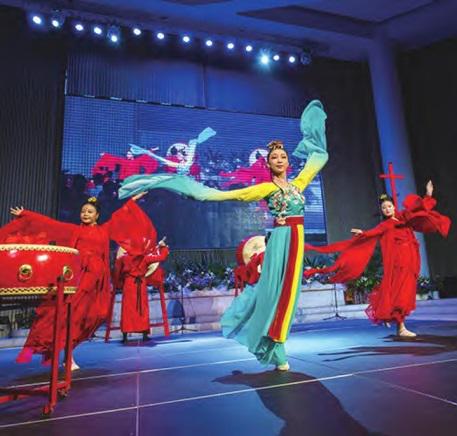On May 5, China's State Administration for Religious Affairs republished on its WeChat account an article titled "Exploration of Sinicized Christian Music in Contemporary China," which was originally published in the fifth issue of the China Religion Magazine in 2023. The author was Xu Ying, a lecturer at the School of Music, Inner Mongolia University for Nationalities.
Xu Ying believes that the modern exploration of sinicized Christian music involves two main aspects: firstly, creating many Christian music works that reflect Chinese theological thoughts and fit Chinese aesthetic taste in music. Secondly, gospel songs are played with Chinese-style performance techniques.
She also reviews several aspects of exploration by older generations of musicians in the Chinese Christian community regarding the sinicization of Christian music: some translated hymns into vernacular Chinese understandable or directly into minority languages according to Chinese tonal rules; some created related lyrics and compositions for hymns played by common styles of Chinese music; in addition to Western staff notation, some used Gongche notation to facilitate the performance of traditional Chinese instruments.
For example, in the Chinese New Hymnal published in 1985, many contemporary Christian music songs express the desire of Chinese Christians to run Chinese churches using the three self principles (self-governance, self-support, and self-propagation), such as "Self-Governing Our Church Endeavors for," "God Our Father, Lead Our Church On," and "Church of China, Arise and Stand." Some works are composed using the Chinese pentatonic and heptatonic scales, such as "Gracious God, Our Father," "Crystal Night, Stilly Night," and "Joy in Serving," with a high level of composition; in addition, some poems, such as "Respect for Elders," reflect Chinese traditional culture from different perspectives.
Since the beginning of the 21st century, Fujian CC&TSPM has published the "Excellent Original Sacred Music Works Album of Sinicized Christianity in Fujian Province," mainly written by Christian believers, with local dialects as auxiliary languages. Most of the music scores adopted the melodies of Chinese traditional folk songs, with some works using Min (Fujian) opera. Chords were used in some songs to "reflect national features and local characteristics." The original music works presented in the concert themed "Love Fulfills Hunan" held by Hunan CC&TSPM in 2022 used Hunan folk song melodies, "embodying traditional Chinese virtues, such as self-improvement, dedication, righteousness, and filial piety, as well as respecting work and enjoying company."
In some ethnic minority areas, Christian hymns are combined with ethnic music. For example, in Inner Mongolia, Christian musicians have created hymns with Mongolian long tunes and Mongolian short tunes, accompanied by traditional Mongolian instruments such as the horse-head fiddle.
In terms of instrument usage and playing styles, it is common practice to widely use Chinese ethnic musical instruments and traditional performance forms. For example, the Agape Folk Orchestra of Hefei Church in Anhui Province has explored the incorporation of more than ten kinds of ethnic musical instruments such as erhu, flute, pipa, yangqin, guzheng, and suona (a double-reed instrument) into Christian rituals. For more than 20 years since its establishment, the orchestra has created or adapted more than 30 representative pieces, such as "Sweet and Holy Jesus' Name" and "God, Our Father, Lead Our Church On."
In addition, attempts have been made to integrate Chinese traditional arts into the performance process. For example, the Chinese-style sacred music exchange concert held by Ningbo CC&TSPM, Zhejiang Province, in 2017 featured ensemble performances of traditional Chinese instruments and solo performances of flutes and guzhengs, with couplets in calligraphy displayed under the gentle accompaniment of the guqin. In a large-scale Christian music concert featuring the sinicization of Christianity jointly organized by CC&TSPMs of Beijing, Tianjin, and Hebei in 2018, not only were the selected poems original or adapted from traditional folk songs, including Inner Mongolian long tunes, Shaanbei dialect tones, and Yunnan folk songs, but there were also many innovations in performance forms. Accompanied by classical dance, a drum dance named "Amazing Grace in China" absorbed the variation and extension of Chinese drum music. The choral dance "Praise the Great Glory" incorporated ethnic minority dances. Accompanied by recitation, chorus, and dance, the hymn "God's Love for China" combined traditional Tianjin tunes with modern ethnic dances.
Xu continues, "During the process of exploring how to sinicize Christian music in contemporary times, we find that people attach importance to the cultivation of music talents." Currently, besides academic programs conducted by religious colleges, training classes, seminars, exchange meetings, and work collections are organized by CC&TSPMs across the country to train talents. For example, since 2013, Hunan Provincial CC&TSPM has adopted the strategy of combining seminars, work, training, and singing for talent cultivation.
- Translated by Abigail Wu












